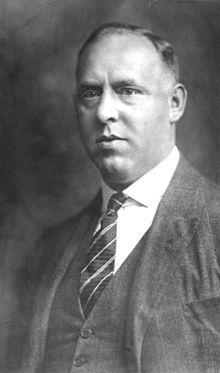Gregor Strasser
 |
Gregor Strasser was an early member of the Nazi Party. During Adolf Hitler’s imprisonment Strasser attempted to take the Nazi Party in a different ideological direction. He failed in this and in 1934 Strasser paid the price for what Hitler considered a betrayal.
Gregor Strasser was born on May 31st 1892. He served in World War One and was given a commission. Strasser ended the war as a lieutenant. He was awarded the Iron Cross (First and Second Class) for his bravery. As with many other former soldiers, Strasser hated the Treaty of Versailles and the fact that representatives from the Weimar government had signed it. He aligned himself with the numerous members of right wing political organisations that existed in Germany post-1918 and eventually joined the newly formed Nazi Party. He and his followers in Landshut tried to help out during the Beer Hall Putsch in Munich. However, he arrived too late and the attempted putsch had been put down by the police. Hitler was under arrest and the party was leaderless. While Hitler served his prison sentence at Landsberg, Strasser took over as co-chairman of the party. He proved to be a hard worker with a skill at organising people. He decided to do the job full time and as a result Strasser sold his chemist’s shop.
He founded a new newspaper with the money he made from the sale of his shop called the ‘Berliner Arbeiter Zeitung’. His brother Otto edited it. He also introduced a party newsletter that went out to party members. This was called the ‘NS-Briefe’ and Strasser called on the 24 year-old Dr Joseph Goebbels to edit it.
While Hitler was in prison, Strasser decided that the party had to go in a new ideological direction. Whereas Hitler had preached the Nazi value of ‘Blood and Soil’ – that all Germans of good blood came from a rural farming background – Strasser believed in the opposite – that the urban man and industrialisation were the way ahead if Germany was going to retain her old power and authority in Europe. Strasser saw himself as an “urban revolutionary” who wanted to fully embrace “undiluted socialist principles”. He believed that he would give the party a far greater intellectual bent than Hitler could ever hope to achieve.
At the 1926 Bamberg Party Conference Strasser was supported by his brother, Otto, and initially by Goebbels. However, it soon became clear to Goebbels that Hitler had more support than Strasser had bargained for and he was able to argue his case for ‘Blood and Soil’ with some cogency. As a result Goebbels changed sides and this resulted in Strasser calling him a “scheming dwarf”.
The relationship between Hitler and Strasser did not improve as time moved on. Hitler attempted some form of rapprochement in 1932 when he appointed Strasser Reich Organisation Leader of the Nazi Party. However, for Strasser it was not enough. It soon became very clear just how far the two had drifted apart when in July 1932, Hitler appointed Hermann Goering as Presiding Officer of the Reichstag. The Nazis were the strongest party in the Reichstag after the 1932 election and as party leader Hitler was responsible for appointing the Presiding Officer. The appointment of Goering was a real ‘slap in the face’ for Strasser and a sign that he no longer had a future in the Nazi Party.
Chancellor Kurt von Schleicher sensed a Nazi Party division and decided to use it for his own purposes. He offered the posts of Vice-Chancellor and Premier of Prussia to Strasser. Hitler was furious and confronted Strasser at a meeting at the Kaiserhof. Both accused the other of betrayal. Strasser resigned his positions in the party in December 1932 and for a while it looked as if Hitler had lost control of the party as it seemed to be falling into disarray. However, there was no obvious immediate successor to Hitler and no challenge or resignation occurred. Strasser went on a long term stay in Italy. When he returned to Germany he worked for a chemicals company and stayed out of politics.
Rudolf Hess was appointed to succeed Strasser as head of the newly named Central Political Commission, the old Reich Organisation of the Party.
Once Hitler became Chancellor on January 30th 1933, Strasser’s fate was sealed even though he remained politically inactive after the Kaiserhof meeting. He was murdered on the Night of the Long Knives (June 30th 1934). Hitler had neither forgotten nor forgiven Strasser’s perceived betrayal.
July 2012
Related Posts
- Otto Strasser Otto Strasser, the younger brother of Gregor, was a leading figure in the early days of the Nazi Party. Otto Strasser sided with…
- The Bamberg Conference of 1926 Adolf Hitler called for a Nazi Party conference to be held at Bamberg. Hitler was becoming concerned that the Nazi…
- Adolf Hitler led Germany throughout World War Two. His desire to create an aryan race was paramount in his ethos and political campaigns. Hitler had no…